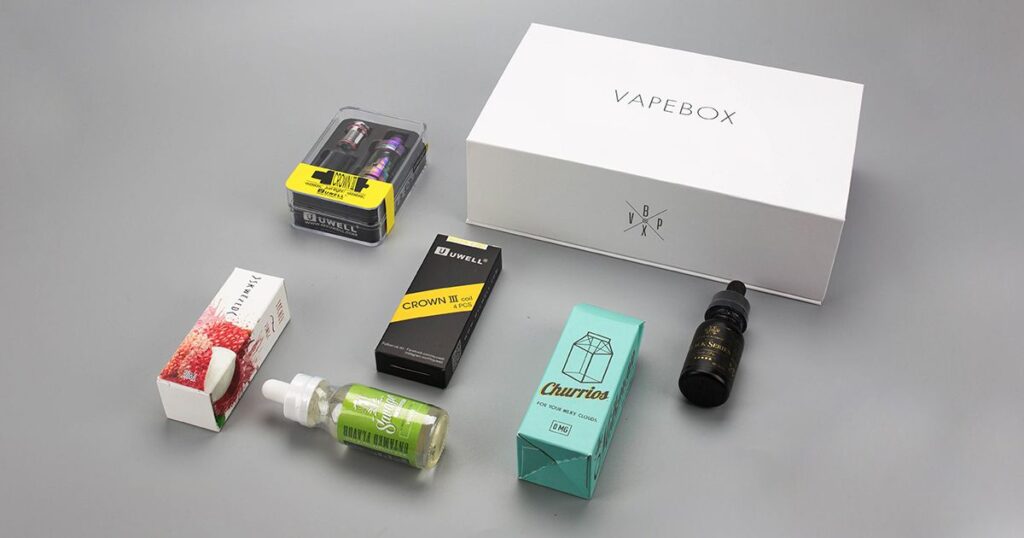The vape industry has seen rapid growth in recent years, but along with this growth, regulatory bodies worldwide have imposed stricter controls. These changes affect every aspect of the product, especially how it is packaged. Packaging serves not only as protection but also as a communication tool between brands and consumers. The evolving regulations have reshaped vape packaging, influencing design choices, material selection, and consumer engagement strategies. Below, we explore the multifaceted impact of regulatory changes on packaging design in detail.
Enhanced Health and Safety Labeling
One of the most prominent shifts driven by regulatory updates is the demand for improved health and safety labeling on packaging. Governments and health authorities require more explicit warnings to make sure users understand the risks involved with vaping products. These regulations mandate prominent display of health warnings that cover a large portion of the packaging surface, often accompanied by graphic images depicting potential health consequences.
Moreover, ingredient disclosure has become mandatory in many jurisdictions, requiring the exact list of components and nicotine concentration. This transparency ensures consumers can make well-informed choices, but it also presents designers with a challenge: maintaining brand identity while allocating significant space for regulatory text.
Font sizes, colors, and placement of warnings are often strictly dictated by law, ensuring they cannot be overlooked or minimized. These restrictions often push creative boundaries, as the limited space demands careful balance between compliance and visual appeal. The result is packaging that emphasizes safety without completely sacrificing aesthetics.
Child-Resistant and Tamper-Evident Features
Safety regulations have also transformed the structural aspects of packaging design. The prevention of accidental ingestion by children has become a priority, leading to the widespread adoption of child-resistant mechanisms. These safety features include specialized caps, locks, or packaging formats designed to be difficult for children to open.
Additionally, tamper-evident seals have become a standard requirement. These features protect consumers by signaling whether the product has been opened or compromised before purchase. They build trust and reduce risks associated with contamination or counterfeit products.
Integrating these safety features demands redesigning packaging machinery and materials. For example, sturdy plastic, metal, or composite materials are preferred to withstand tampering attempts while remaining user-friendly for adults. This increased complexity often elevates production costs but ensures compliance and consumer protection.
Constraints on Branding and Promotional Elements
Marketing through packaging has become increasingly restricted. Regulatory authorities aim to limit the appeal of vaping products to younger demographics by controlling design elements. This results in strict rules on color schemes, imagery, and promotional text that can be displayed.
Many markets have introduced plain packaging laws or require packaging to be free from logos and attractive visuals. As a consequence, companies shift toward minimalist designs with muted colors and simple fonts. While this complies with regulations, it reduces differentiation and brand recognition on store shelves.
This regulatory environment forces companies to find new ways to express brand identity beyond packaging. Digital campaigns, influencer marketing, and product innovation become vital strategies. Still, packaging remains crucial as the first point of contact, making the design balance between regulation and marketing a fine line to walk.
Informing and Protecting Consumers
Packaging serves a critical educational role under new regulatory frameworks. The detailed information included on packages helps consumers understand not only the risks but also the correct usage of vaping products. Safety instructions, storage advice, and warnings about nicotine addiction are often required.
This educational role extends to preventing misuse or accidental ingestion, especially by vulnerable populations. Packaging that clearly communicates these messages reduces potential harm and supports public health goals.
In addition, child-resistant packaging complements these warnings by physically restricting access. Together, these elements enhance safety and responsibility in product design, reflecting a growing emphasis on consumer protection within regulatory guidelines.
Sustainable Packaging Initiatives
Environmental concerns are increasingly integrated into regulatory requirements. Governments and organizations are pushing for sustainable packaging to reduce waste and pollution linked to vaping products. This has led manufacturers to explore recyclable, biodegradable, and reusable materials for their packaging solutions.
Such eco-friendly materials must still meet all safety and regulatory standards, adding complexity to design decisions. The challenge lies in balancing environmental responsibility with durability, child safety, and tamper evidence.
Furthermore, regulations in some regions limit packaging volume and material weight to reduce waste generation. This encourages leaner packaging designs, often with innovative minimalistic concepts that reduce the carbon footprint.
As consumer demand for sustainability grows, companies adopting greener packaging not only comply with laws but also appeal to environmentally conscious buyers, creating a competitive edge.
Navigating Diverse Global Regulations
The international nature of the vaping market means companies must contend with widely varying regulatory requirements across countries and regions. Packaging that complies with one country’s laws might violate another’s, requiring multiple versions for global distribution.
For instance, some nations require large, graphic health warnings in their official language, while others prohibit specific colors or packaging styles. This variation complicates supply chains and design processes, increasing costs and limiting economies of scale.
Manufacturers invest heavily in compliance teams and technology to track regulatory changes worldwide. The ability to quickly adapt packaging to new laws is crucial for maintaining market access and avoiding legal penalties. This global regulatory patchwork demands agility and foresight in packaging strategy.
Leveraging Technology in Packaging Adaptation
Technology plays an essential role in helping companies meet evolving packaging regulations. Digital printing enables rapid, cost-effective updates to health warnings, ingredient lists, and other mandatory information. This flexibility is vital given the frequent changes in regulations.
Smart packaging technologies, such as QR codes and NFC tags, allow brands to provide detailed product data without overcrowding the physical package. Consumers can scan these features for up-to-date information, instructions, or promotional content, adding value while maintaining compliance.
Automation in packaging lines ensures precision in applying safety features like child-resistant caps and tamper seals, improving reliability and consistency. Additionally, innovations in materials science contribute to creating safer, sustainable, and regulatory-compliant packaging options.
The integration of these technologies not only supports regulatory adherence but also enhances overall product quality and consumer engagement.
Financial Implications of Regulatory Compliance
Adjusting packaging to meet stringent regulations imposes significant financial burdens on vape companies. Costs arise from redesign efforts, new materials, production adjustments, and quality control measures. These expenses often increase the price of the final product.
Smaller companies may struggle with these rising costs, potentially driving consolidation in the market where larger firms with greater resources dominate. At the same time, non-compliance risks legal action, fines, and loss of market access, which can be more costly.
On the upside, regulatory compliance can improve consumer confidence, enhancing brand reputation and fostering loyalty. Transparent and safe packaging may encourage responsible use and repeat purchases, contributing to long-term business sustainability.
Strategic investment in compliance, technology, and innovation is therefore essential for balancing cost pressures with growth opportunities.
Emerging Trends Shaping the Future of Packaging
The future of vape packaging is set to be shaped by ongoing regulatory evolution, technological advances, and consumer preferences. Greater emphasis on sustainability will drive widespread adoption of eco-friendly materials and streamlined designs.
Interactive packaging, incorporating augmented reality or digital interfaces, will provide richer product information and personalized experiences. Enhanced safety features using smart sensors or biometric locks could improve child protection and tamper resistance.
Transparency and honest communication will remain at the forefront, with packaging serving as a trusted source of health and safety information. Regulations may continue to tighten, requiring even more sophisticated compliance solutions.
Ultimately, brands that innovate while adhering to regulatory frameworks will secure their position in a competitive and highly regulated marketplace. Packaging will remain a crucial intersection of design, technology, and compliance.
Conclusion
In summary, regulatory changes have profoundly reshaped packaging design in the vaping industry. From stricter safety warnings to environmental requirements, these regulations protect consumers and influence market dynamics. The ongoing challenge for companies lies in creating packaging that balances compliance, safety, brand identity, and sustainability. By leveraging technology and strategic innovation, the industry can adapt to these demands and thrive in a complex regulatory environment.
Visit Our Website and Order Now: https://cbdpackagingstore.com/vape-boxes/



